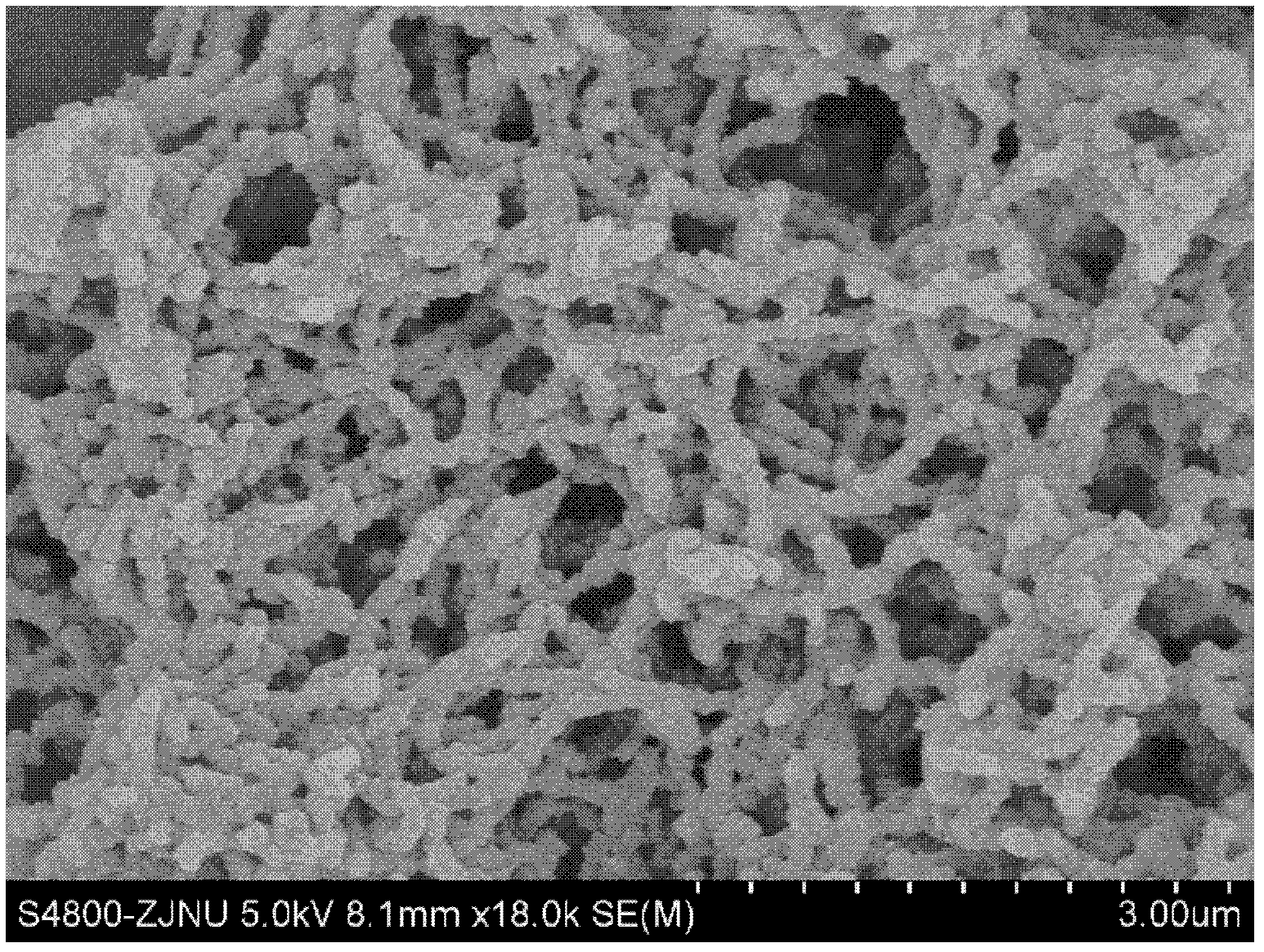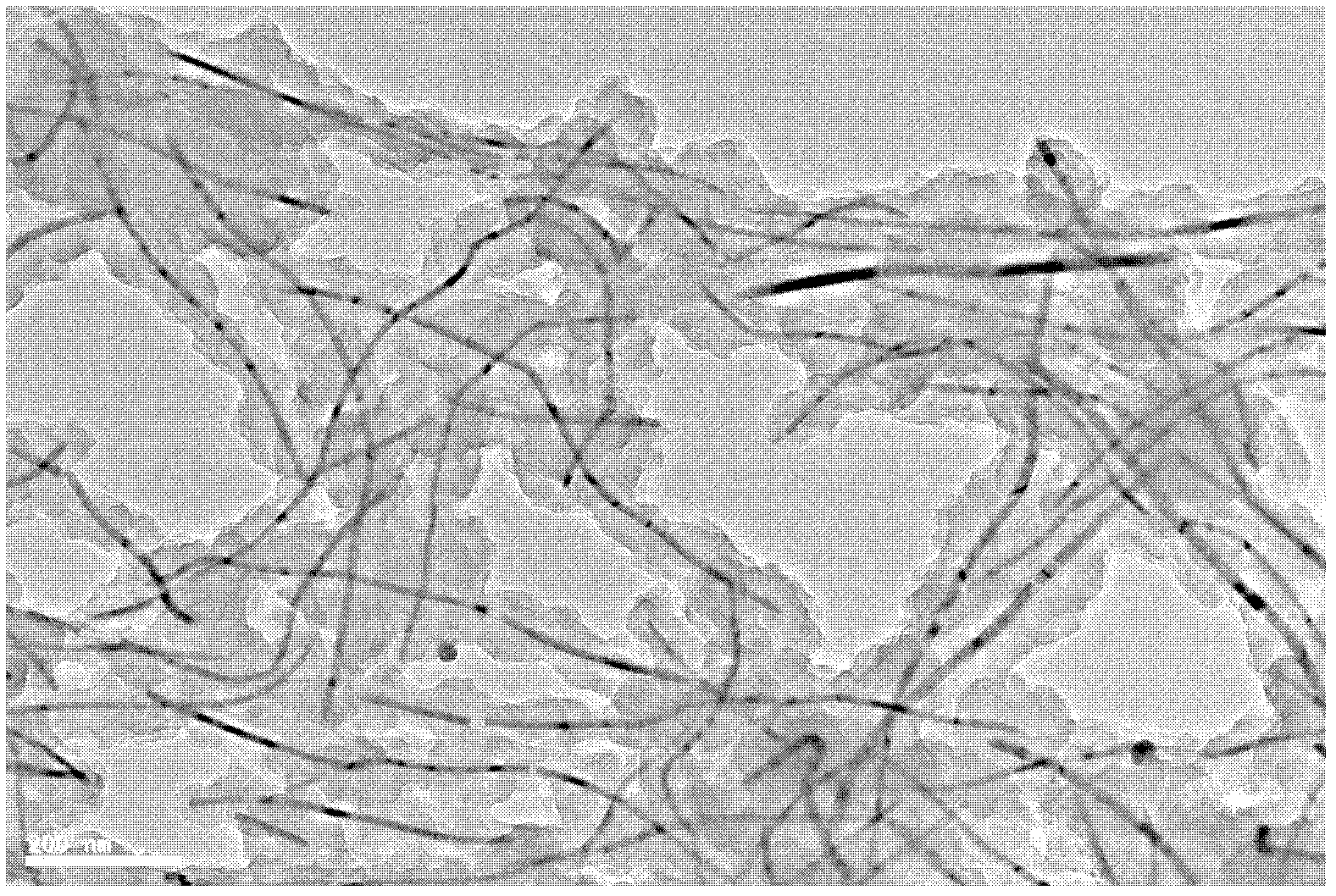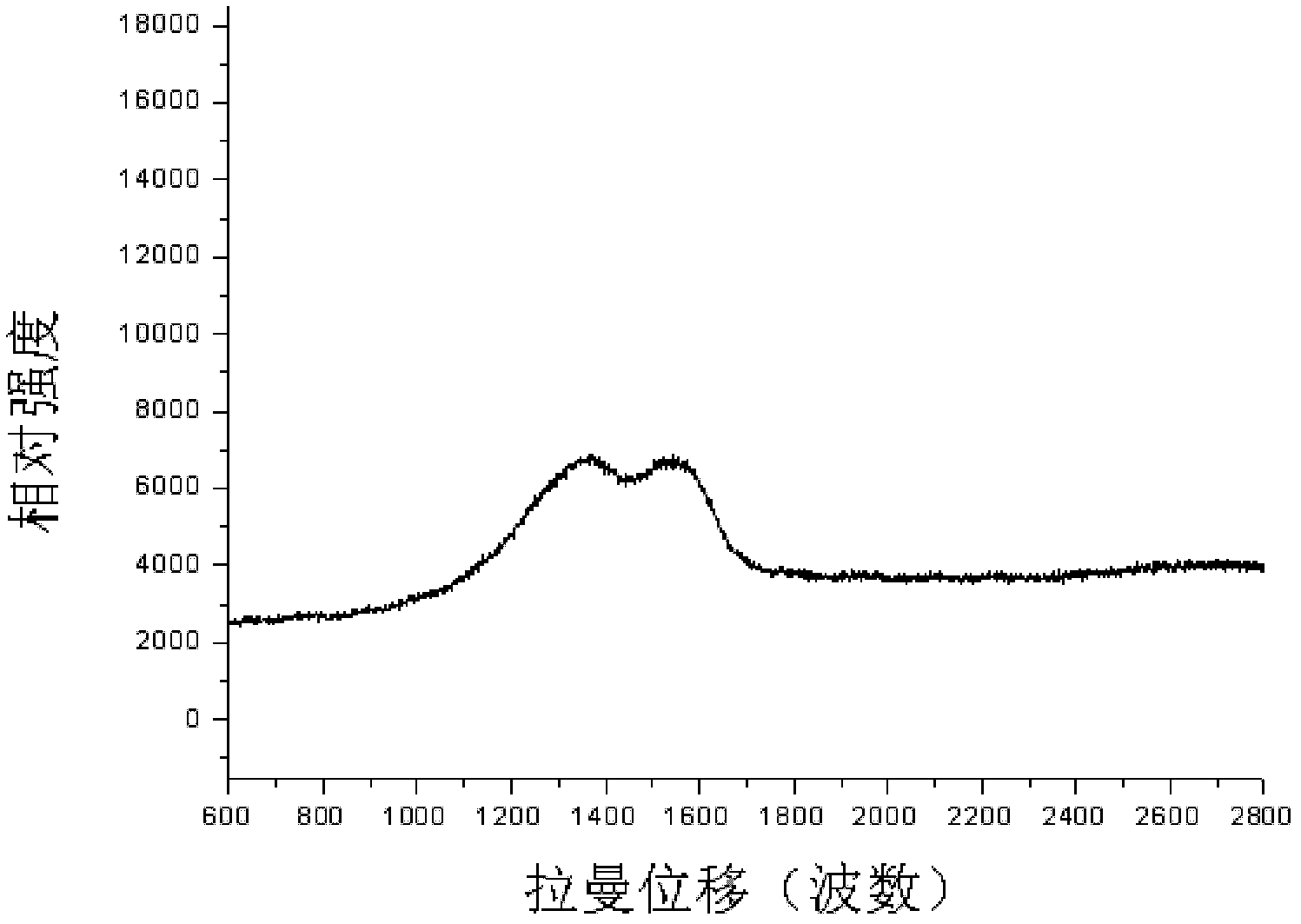Method for preparing novel carbon material at low temperature for processing dye waste water
A technology of dye wastewater and carbon materials, which is applied in chemical instruments and methods, textile industry wastewater treatment, adsorption water/sewage treatment, etc., can solve the problems of unfavorable industrial production, high operation requirements, complex process, etc., and achieve strong adsorption capacity, The effect of simple operation and simple process requirements
- Summary
- Abstract
- Description
- Claims
- Application Information
AI Technical Summary
Problems solved by technology
Method used
Image
Examples
preparation example Construction
[0025] The low-temperature preparation method of the novel carbon material used for treating dye wastewater provided by the invention, its steps include:
[0026] (1) Prepare a sugar-containing aqueous solution. The method for preparing a sugar-containing aqueous solution is: add 12.5-312.5 g of sugar compounds, 7-100 g of amine compounds, 2-48 g of polyvinylpyrrolidone, and tellurous acid to each L of aqueous solution. Sodium 1.0-6.6g;
[0027] (2) Seal the reaction vessel that has been put into the prepared saccharide compound aqueous solution, heat the sealed reaction vessel to 120-140°C, react for 10-24 hours, cool naturally, and centrifuge to obtain the product, which is used separately Washing with distilled water and absolute ethanol three times, and drying to obtain carbon fibers with a diameter of 10nm to 100nm;
[0028] (3) Use the dye compound to prepare an aqueous solution of the dye compound with a concentration of 0.5-10 mg / L;
[0029] (4) Mix the prepared carb...
Embodiment 1
[0036] A low-temperature preparation method of a novel carbon material for treating dye wastewater, the steps of which are:
[0037] (1) Disperse 0.8 g of starch, 1.4 g of hexamethylenetetramine, 0.1 g of polyvinylpyrrolidone and 0.1 g of sodium tellurite in 24 ml of water, stir and dissolve to form a mixed aqueous solution containing sugar compounds;
[0038] (2) Put the prepared saccharide compound aqueous solution into a 30 ml reactor whose inner liner is made of polytetrafluoroethylene and whose outer shell is made of steel;
[0039] (3) After sealing the reactor, place it in an oven at 140 °C for 20 hours, cool naturally, and centrifuge to obtain the product, wash the product three times with distilled water and absolute ethanol, and dry to obtain carbon nanofibers;
[0040] (4) Take 20 mg of the above-mentioned carbon nanofibers, disperse them in 5 ml of methylene blue solution with a concentration of 6 mg / L, leave them at room temperature for 50 minutes, and remove 90% ...
Embodiment 2
[0048] A low-temperature preparation method of a novel carbon material for treating dye wastewater, the steps of which are:
[0049] (1) Disperse 1.0 g of β-cyclodextrin, 2.0 g of trimethylamine oxide, 0.2 g of polyvinylpyrrolidone and 0.09 g of sodium tellurite in 24 ml of water, stir and dissolve to form a mixed aqueous solution containing sugar compounds;
[0050] (2) Put the prepared saccharide compound aqueous solution into a 30 ml reactor whose inner liner is made of polytetrafluoroethylene and whose outer shell is made of steel;
[0051] (3) After sealing the reaction kettle, place it in an oven at 120 °C for 12 hours, cool naturally, and centrifuge to obtain the product, wash the product three times with distilled water and absolute ethanol, and dry to obtain carbon nanofibers;
[0052] (4) Take 20 mg of the above-mentioned carbon nanofibers, disperse them in 10 ml of methylene blue solution with a concentration of 10 mg / L, leave them at room temperature for 2 hours, a...
PUM
| Property | Measurement | Unit |
|---|---|---|
| diameter | aaaaa | aaaaa |
| diameter | aaaaa | aaaaa |
| thickness | aaaaa | aaaaa |
Abstract
Description
Claims
Application Information
 Login to View More
Login to View More - R&D Engineer
- R&D Manager
- IP Professional
- Industry Leading Data Capabilities
- Powerful AI technology
- Patent DNA Extraction
Browse by: Latest US Patents, China's latest patents, Technical Efficacy Thesaurus, Application Domain, Technology Topic, Popular Technical Reports.
© 2024 PatSnap. All rights reserved.Legal|Privacy policy|Modern Slavery Act Transparency Statement|Sitemap|About US| Contact US: help@patsnap.com










